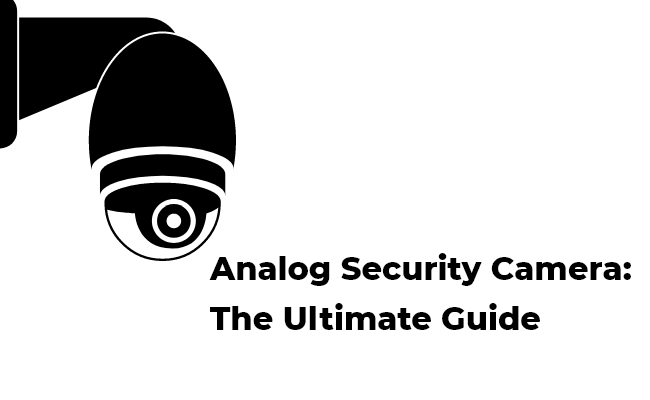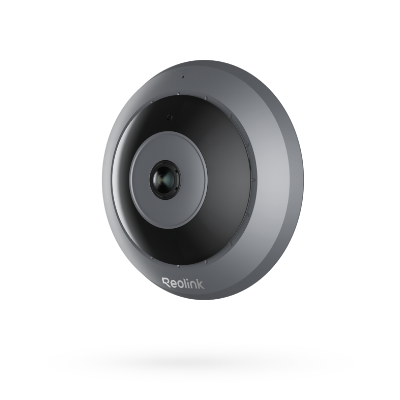Analog Security Camera: The Ultimate Guide

In an age dominated by cutting-edge technology, analog security cameras remain unwavering as reliable guardians for security and surveillance. While digital alternatives have gained popularity, analog security cameras remain important in protecting homes, businesses, and public areas. This detailed guide seeks to untangle the complexities of analog security cameras, offering a complete grasp of their features, benefits, installation, and maintenance.
What is an Analog Security Camera?
An analog security camera, commonly known as a CCTV (Closed-Circuit Television) camera, uses old analog technology to collect and transmit video information. Analog cameras, instead of digital counterparts, send footage in analog format via coaxial lines to recording equipment such as DVRs (Digital footage Recorders).
Analog cameras capture video material and transform it into analog signals for smooth transmission, following a process as old as electricity. This basic technique lays the groundwork for espionage that is both simple and effective, demonstrating the lasting power of analog surveillance.
How do Analog Security Cameras Work?
The brilliance of analog cameras is in their capacity to communicate in analog signal language. Unlike their digital equivalents, these cameras record video material and transform it into analog signals for smooth transmission. Consider this: an electron dance changing real-world circumstances into electrical symphonies. The result? A surveillance ballet that is both simple and effective, demonstrating analog surveillance's ongoing power.
Analog cameras thrive in real-time monitoring in this process, providing quick and dependable security feeds with zero latency. The simplicity of this dance between the lens and the display is a defining feature of analog surveillance, providing an immediate image of the scene under watch.
Analog vs. IP Security Camera: What's the Difference?
The analog security camera versus IP debate is a thrilling saga in the decision-making journey of security technology. With their time-tested durability, Analog cameras invite us into a realm where simplicity meets reliability. On the flip side, IP cameras beckon with their digital prowess, offering advanced features and integration capabilities.
Another point to highlight would be the affordability of analog systems, where the cost-effectiveness of it spans from the initial investment to maintenance and upgrades. While digital developments dazzle, analog cameras remain steadfast, providing practical and cost-effective solutions for companies and homes. It's not just about technology; it's about creating a surveillance symphony that fits your goals and budget.
Analog Security Camera System: Essential Components
Let us now deconstruct the framework of a robust analog security camera system—a symphony of crucial components that work together to form an invincible obstacle. These components are more than cogs in a machine; they are the unsung heroes who keep your security system running smoothly
Digital Video Recorder (DVR)
The DVR, a maestro managing the recording and storage of video footage, is at the heart of many analog security systems. But this is no ordinary maestro; instead, it is a hybrid virtuoso who embraces modernity. DVRs transcend old limits, making analog surveillance a contemporary masterpiece with remote access, real-time recording, and seamless interaction with IP networks.
DVRs today provide functions that go beyond simple recording. They become networking centers, allowing for remote access and control. Because of the capacity to store enormous amounts of data, companies, and households may keep a comprehensive record of security footage. This versatility is critical in an era when the need for data storage and accessibility has skyrocketed.
Cable Coaxial
Next is the coaxial cable, the unsung hero of analog surveillance. Consider it the lifeline linking the camera to the DVR, reliably transferring video signals. Coaxial wires, which are durable and capable of traveling long distances without signal loss, exemplify analog systems' simplicity and dependability. The installation transforms into a symphony in which simplicity and efficacy coexist.
In an age where complication frequently triumphs over utility, coaxial cables are a tribute to simplicity's beauty. With their endurance and signal integrity, these cables ensure the analog surveillance dance stays continuous. The link between the camera and the DVR becomes a dependable thread, constructing a security tapestry.
HDMI Cables
Consider the crescendo—the instant surveillance footage is sent from the DVR to your viewing device. This is where HDMI cables shine, providing a visual extravaganza of unsurpassed clarity. HDMI connections' digital transmission capabilities increase the viewing experience, turning surveillance into a cinematic excursion.
HDMI cables play an essential part in the visual symphony of surveillance. They transform into clarity conduits, guaranteeing that every detail acquired by the analog camera is displayed with accuracy and refinement. The analog advantage, combined with HDMI's digital capability, results in a viewing experience that exceeds expectations.
Can I Convert Analog Security Cameras to IP Security Cameras?
As we peek into the future of technology, the question comes up: Can analog security cameras put on the guise of digital sophistication? The solution can be found in the inventiveness of security camera analog to IP converters. These amazing gadgets span the analog-to-digital divide, allowing for an update without a whole rebuild. The decision-making path is guided by cost, current infrastructure, and the demand for sophistication.
Analog security cameras have long been the industrial standard, respected for their simplicity and dependability. However, the introduction of IP cameras with enhanced capabilities has motivated many people to investigate the possibilities of updating current analog systems. Analog-to-IP converter is a clever piece of equipment that functions as a bridge, converting analog signals from current cameras into digital signals that can be used with IP networks.
The conversion journey is a deliberate choice, not merely a technical procedure. Businesses and people considering the transition from analog to IP must balance the advantages and drawbacks. The current infrastructure is critical, and analog camera compatibility with IP networks becomes a critical factor. It's a revolutionary trip where the analog past meets the digital future, and each step demands careful deliberation.
The 4K analog security camera is the epitome of surveillance systems due to its exceptional visual clarity. This system has a high resolution, resulting in a sharp, detailed film that assists in precise monitoring. The security camera analog to IP converter makes the transfer from analog to IP simple, simplifying interoperability and enhancing the system's capability. Furthermore, the analog fisheye security camera provides a panoramic picture, which improves surveillance coverage.
6MP WiFi 360° Panoramic Indoor Fisheye Camera
6MP Super HD, 360° Panoramic View, 5/2.4 GHz Dual-Band WiFi, Multiple Display Modes, Smart Person Detection, Two-Way Audio, Clear Night Vision.
Benefits of Using Analog Security Cameras
Aside from the technological aspects, it is critical to investigate the real-world uses of analog security cameras. Analog cameras continue to serve an important role in protecting retail spaces and office buildings and monitoring essential infrastructure and public places.
Let's look at the perks that make analog cameras a vintage choice for surveillance enthusiasts.
1. Cost-Effectiveness: Keeping Your Budget Safe
One of the most notable advantages of analog security cameras is their low cost. These cameras are frequently less expensive than their digital equivalents, making them an appealing alternative for individuals and companies looking to beef up their security without breaking the bank.
2. Compatibility: Easily integrated into existing systems
Analog cameras provide exceptional interoperability, allowing them to integrate smoothly into current infrastructure. This implies that analog cameras may quickly become part of the monitoring framework without requiring a significant rewrite, whether you're replacing an existing security system or beginning from scratch.
3. Efficient Network Performance with Low Bandwidth Usage
When compared to digital cameras, analog cameras use less bandwidth. This effectiveness guarantees that your network assets are used wisely, avoiding overcrowding and interruptions. Say goodbye to choppy feeds and welcome pleasant, consistent monitoring.
4. Longevity: Withstanding the Elements
Analogue security cameras are built to survive harsh weather conditions. These cameras are designed to withstand various weather situations, guaranteeing uninterrupted operation even under extreme settings. Analog cameras stand guard in all weather conditions.
FAQs
What is an analog security camera?
An analog security camera is a traditional surveillance device that uses a wired connection to transmit video signals. It captures footage in standard definition and requires a DVR (Digital Video Recorder) for recording and storage.
How do I know if my security cameras are analog or digital?
Check the type of cable your cameras use. Analog cameras typically use coaxial cables, while digital cameras usually connect via Ethernet (IP) cables. You can also look for information in the camera specifications or check the recording system; analog cameras connect to DVRs, while digital ones connect to NVRs.
Are there security cameras that don't use Internet?
Yes, there are security cameras that operate without internet connectivity. These cameras function using local storage options like SD cards or hard drives and don't rely on an internet connection for recording or live viewing. They operate independently within a closed system without the need for internet access.
Conclusion
Lastly, analog surveillance is a robust and evergreen approach that combines simplicity, adaptability, and cost-effectiveness with the demands of the digital world. They serve as reliable lighthouses in a society propelled by technological enthusiasm, demonstrating that the classics may be true avant-garde. Do you use an analog security camera or an IP one? Which one is better? Share your thougts with us in the comment section below and let´s discuss them together!
Search
Be in the Know
Security insights & offers right into your inbox

